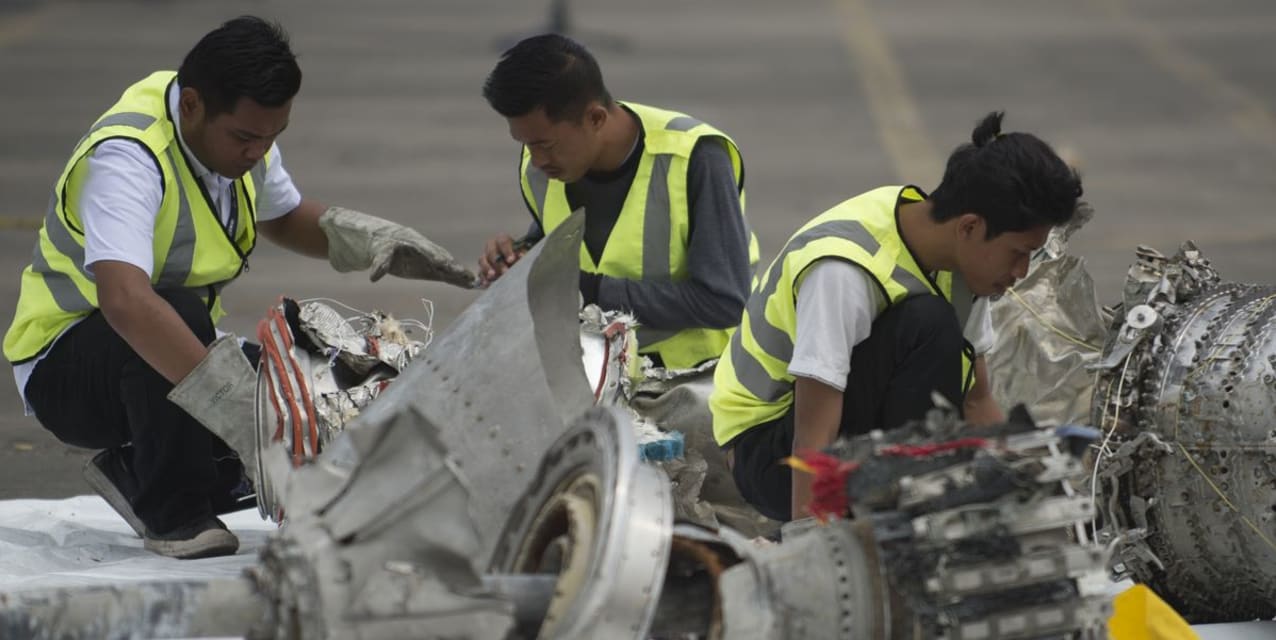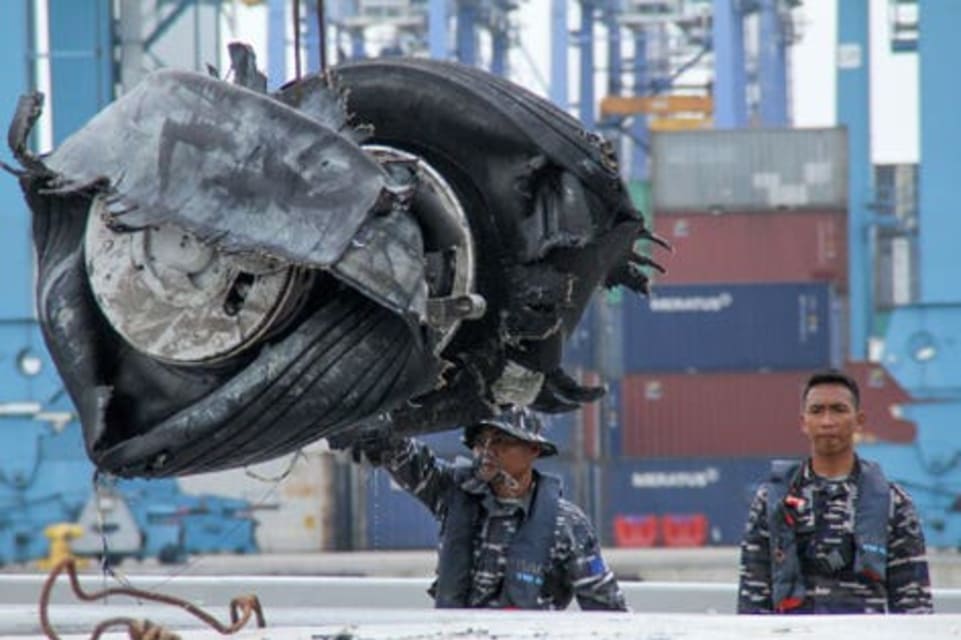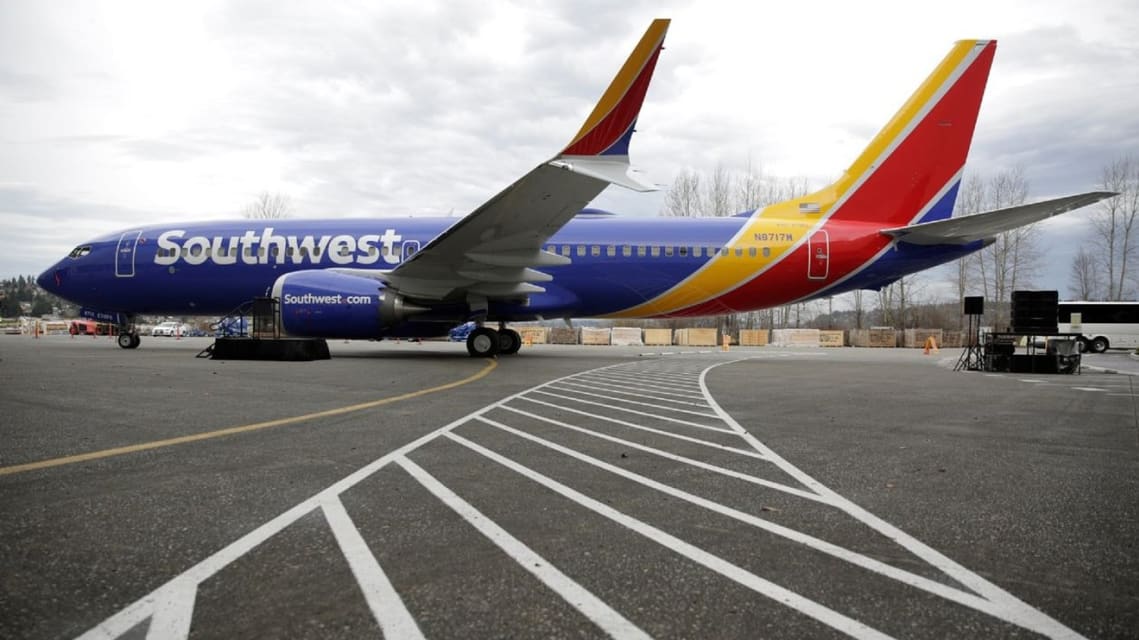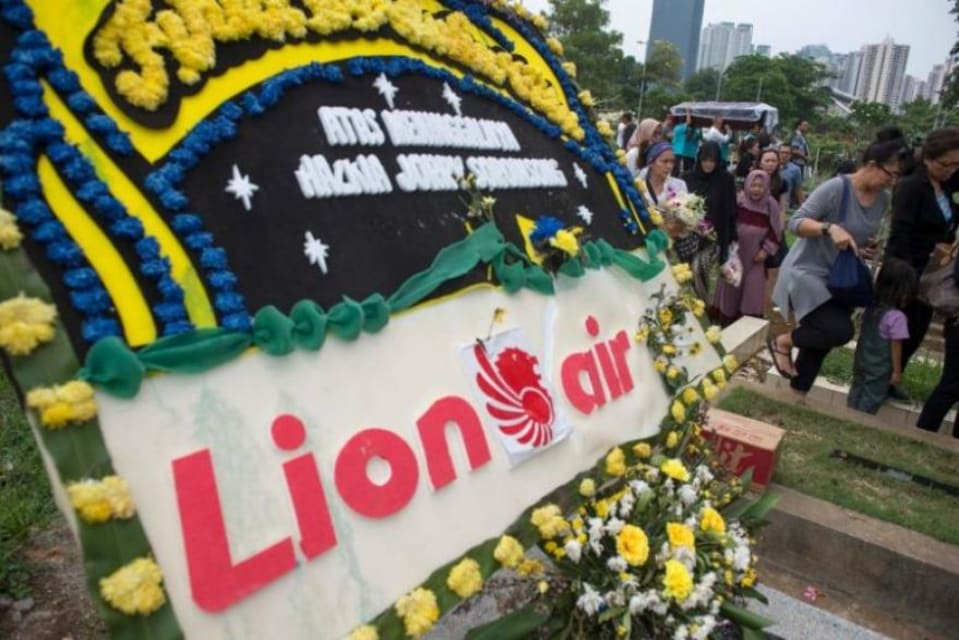Entities
View all entitiesCSETv1 Taxonomy Classifications
Taxonomy DetailsIncident Number
3
AI Tangible Harm Level Notes
It is unclear whether the MCAS system relied on machine learning or other contemporary AI methods instead of sophisticated rules.
Special Interest Intangible Harm
no
Date of Incident Year
2018
Date of Incident Month
10
Date of Incident Day
29
Risk Subdomain
7.3. Lack of capability or robustness
Risk Domain
- AI system safety, failures, and limitations
Entity
AI
Timing
Post-deployment
Intent
Unintentional
Incident Reports
Reports Timeline
/arc-anglerfish-syd-prod-nzme.s3.amazonaws.com/public/TJU32NCPOJFSVJO4SLPNBPNMQ4.jpg)
Possible faulty equipment that led to the crash of Lion Air Flight 610 was the same sort of sensing gear that contributed to the crash of an Air New Zealand A320 off Perpignan 10 years ago.
A failure of air flow monitoring pitot tubes on bo…

(Bloomberg) — The Lion Air jet that crashed into the Java Sea off Indonesia earlier this week had experienced problems with the sensors used to calculate altitude and speed on its previous flight, an issue that could help explain why the pl…

ZHUHAI, China, Nov 7 (Reuters) - Boeing Co said on Wednesday it had issued a bulletin to airlines reminding pilots how to handle circumstances where there was erroneous data from “angle of attack” sensors, in the wake of the Lion Air crash …

(CNN) Problems were reported on a Lion Air jet that crashed into the sea off Jakarta even after technicians replaced a sensor on board the aircraft, investigators said.
Indonesian authorities confirmed Wednesday that the angle of attack (AO…

Lion Air plane had angle of attack sensor replaced prior to crash; Boeing issues safety reminder
Updated
A crucial sensor that is the subject of a Boeing safety bulletin was replaced on a Lion Air jet the day before it plunged into the Java…

A Boeing Co. warning to 737 Max operators around the globe provides the first clues about how bad data from an airflow sensor might have contributed to the deadly crash of an Indonesian airliner last week.
The bulletin and statements by Ind…

A crucial sensor was replaced on a Lion Air jet the day before it plunged into the Java Sea, and that sensor replacement may have exacerbated other problems with the plane, Indonesian investigators said on Wednesday.
That sensor, known as t…

The FAA has issued an emergency directive to anyone flying the Boeing 737 MAX, the type of plane that crashed in the Lion Air Flight JH 610 incident, related to the faulty sensors that reportedly fed bad information to the pilots. Meanwhile…

AFP/Getty Images
[Updated: Nov. 13]
The FAA issued an emergency airworthiness directive Wednesday to airlines operating the new Boeing 737 MAX, calling on them to better instruct pilots on how to deal with a potential faulty reading from a …

Indonesia's National Transportation Safety Committee said on Wednesday that a crucial sensor had been replaced on a Lion Air jet the day before it plunged into the Java Sea, killing all 189 people on board.
That sensor, known as the "angle …

During the three weeks before Lion Air Flight 610 plunged into waters off Indonesia, Southwest Airlines Co. LUV, +0.25% replaced two malfunctioning flight-control sensors of the same type that has been publicly implicated in the crash, acco…

Data from the fatal Oct. 29 flight that killed 189 people, and from the prior day's flight of the same jet, raises questions about three factors that seem to have contributed to the crash.
A key instrument reading on Lion Air flight JT610 w…

A malfunctioning sensor at the centre of the investigation into the Oct 29 crash of a Lion Air jetliner into the Java Sea wasn't repaired before the fatal flight even though it had failed on the plane's previous trip, according to a prelimi…
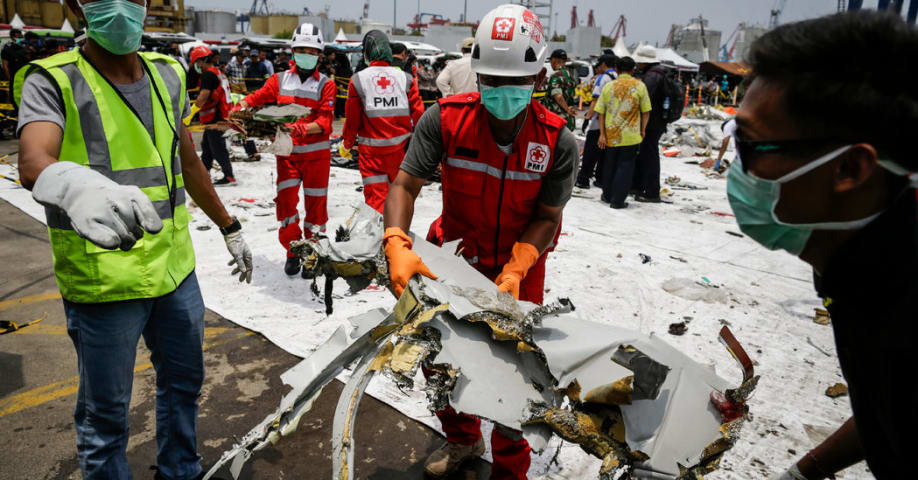
Investigators have yet to recover the cockpit voice recorder, which could provide further insight into the steps taken by the pilots and whether they followed the correct procedures.
Despite Boeing’s insistence that the proper procedures we…

National Transportation Safety Committee investigator Nurcahyo Utomo holds a model of an airplane during a press conference on the committee's preliminary findings on their investigation on the crash of Lion Air flight 610, in Jakarta, Indo…

JAKARTA, Indonesia (AP) — Pilots fought against an automated system that pitched a Boeing jetliner’s nose down repeatedly because of a faulty sensor until they finally lost control and plunged into the Java Sea last month, Indonesian invest…
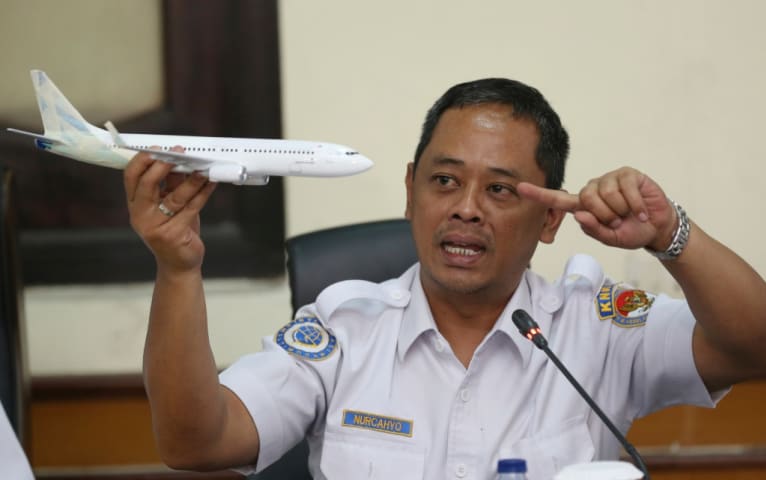
JAKARTA, Indonesia – A malfunctioning sensor and an automated response from the aircraft’s software stymied pilots’ efforts to control a doomed Indonesian flight that went careening into the sea last month, according to a preliminary invest…

Why did the 737 Max plunge into the sea in Indonesia, killing all 189 on board? Pilots must know about every change on the jets they fly: Our view
Indonesians recover a plastic box containing the data recorder of Lion Air Flight 610 on Nov.…

Present day Air travel is one of the safest modes of travel. Statistics from the US Department of Transportation show that in 2007 and 2016 there were 11 fatalities per trillion miles of commercial air travel. This is in stark contrasts to …
Variants
Ethiopian Airlines flight ET302 from Addis Ababa-Bole Airport (ADD/HAAB), Ethiopia to Nairobi-Jomo Kenyatta International Airport (NBO/HKJK), Kenya, a Boeing 737 MAX 8 registration ET-AVJ MSN 62450/7243, crashed about 6 minutes after takeoff from ADD near Bishoftu, Ethiopia, 8°52′37″N 39°15′04″E. There were no survivors among the 157 occupants. Accident investigation found that the causes were similar to those involved in the accident of Lion Air flight JT610 on 29-10-2018. Quoting from the official investigation report: [QUOTE 3.2Probable cause of the accident Repetitive and uncommanded airplane-nose-down inputs from the MCAS due to erroneous AOA input, and its unrecoverable activation system which made the airplane dive with the rate of -33,000 ft/min close to the ground was the most probable cause of the accident. [p. 255] [UNQUOTE [QUOTE The data from the flight data recorders, as summarized in reports of the ET 302 accident and the Lion Air Flight 610 accident, indicated that if a single erroneously high AOA sensor input is received by the flight control system, MCAS can command repeated Airplane nose-down trim of the horizontal stabilizer. This unsafe condition, if not addressed, could cause the flight crew to have difficulty controlling the Airplane , and lead to excessive Airplane nose-down attitude, significant altitude loss, and impact with terrain [p. 257] [UNQUOTE [QUOTE Safety Issue Summary On the previous Lion Air flight and the Lion Air and Ethiopian Airlines accident flights, the DFDR recorded higher AOA sensor data on the left side than on the right (about 20° higher in the previous Lion Air flight and the Lion Air accident flight and about 59° higher on the Ethiopian Airlines accident flight). As previously stated, the MCAS becomes active when the Airplane ’s AOA exceeds a certain threshold. Thus, these erroneous AOA data inputs resulted in the MCAS activating on the accident flights and providing the automatic AND stabilizer trim inputs. The erroneous high AOA sensor input that caused the MCAS activation also caused several other alerts and indications for the flight crews. The stick shaker was activated on both accident flights and the previous Lion Air flight. In addition, IAS DISAGREE and ALT DISAGREE alerts occurred on all three flights. Also, the Ethiopian Airlines flight crew received a Master Caution alert. Further, after the flaps were fully retracted, the unintended AND stabilizer inputs required the pilots to apply additional force to the columns to maintain the Airplane’s climb attitude. [p. 266] [UNQUOTE]
Sources:
- Ethiopian Airplane Accident Investigation Bureau (EAIB). "Aircraft Accident Investigation Report B737- MAX 8, ET-AVJ". Published 23-12-2022. URL: https://www.havkom.se/assets/reports/L-34_19-No-AI_01_18-ACCIDENT-FINAL-REPORT_compressed.pdf
- U.S. National Transportation Safety Board. "Response to Final Aircraft Accident Investigation Report Ethiopian Airlines Flight 302 Boeing 737-8 MAX, ET-AVJ". Published 13-01-2023. URL: https://www.ntsb.gov/investigations/Documents/Response%20to%20EAIB%20final%20report.pdf
- Bureau d'Enquêtes et d'Analyses pour la sécurité de l'aviation civile. "Accident du Boeing 737 immatriculé ET-AVJ et exploité par Ethiopian Airlines survenu le 10/03/2019 près de Bishoftu [Enquête menée par EAIB / Ethiopie] — Observations du BEA". Published 03-01-2023. URL: https://bea.aero/les-enquetes/evenements-notifies/detail/accident-du-boeing-737-immatricule-et-avj-et-exploite-par-ethiopian-airlines-survenu-le-10-03-2019-pres-de-bishoftu-enquete-menee-par-eaib-ethiopie/
- Summary at Aviation Safety Network. URL: https://aviation-safety.net/database/record.php?id=20190310-0
See sources above.
Similar Incidents
Did our AI mess up? Flag the unrelated incidents
Similar Incidents
Did our AI mess up? Flag the unrelated incidents
/arc-anglerfish-syd-prod-nzme.s3.amazonaws.com/public/TJU32NCPOJFSVJO4SLPNBPNMQ4.jpg)






